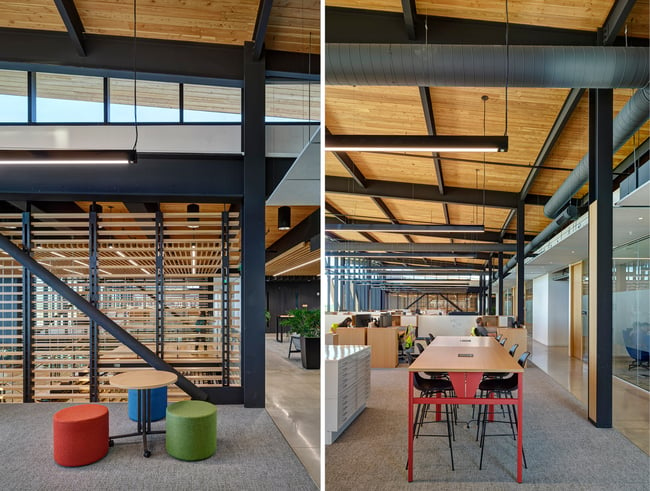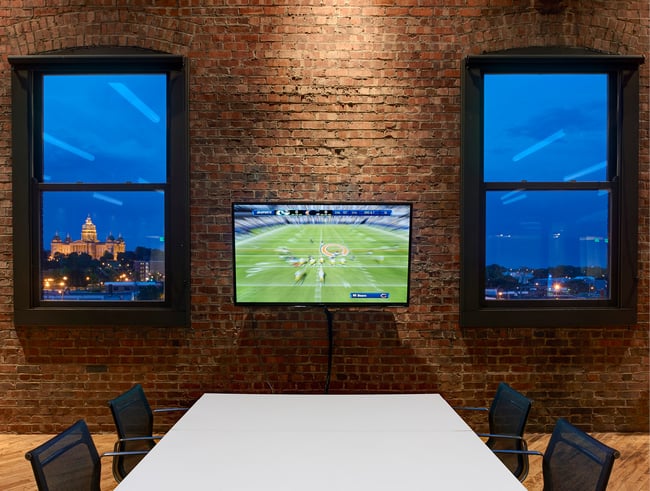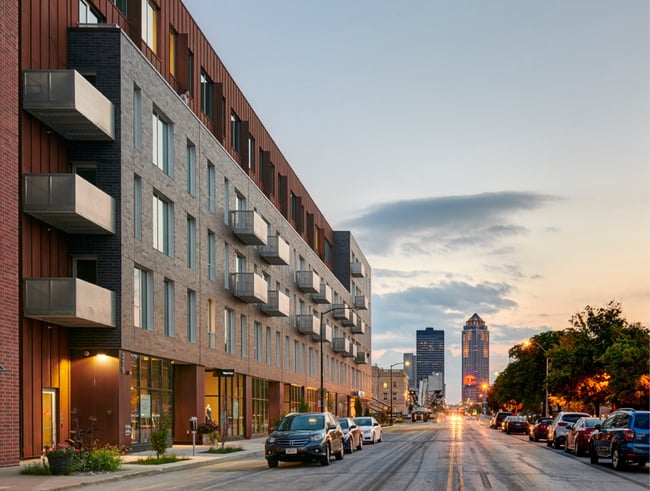Workplace Design: Making the Office More Attractive

While some companies have embraced remote work, others are encouraging employees to return to the office. Working in the office presents many benefits—including improved collaboration, learning, and relationship-building—but not everyone is thrilled by the prospect.
According to a University of Chicago study, 30% of workers feel more productive and engaged when working from home. Along with reduced commutes, remote work provides employees with more flexibility, choice, and control over their personal comfort.
For companies encouraging employees to return to the office or embracing hybrid work, it’s important to find ways to make the office more attractive. We should learn from the pandemic and integrate some of the comforts of home into the workplace.
This article will discuss a few design strategies companies can use to make time at the office more effective and improve employees’ well-being.
5 Ways to Make the Office More Attractive to Workers
1. Provide Choice
For many, working from home provides more freedom than working onsite. People can work at a desk in a home office, move to a kitchen island, and take a call from the couch. The home provides more choice and control than people experience with an assigned desk in the office.
The office, too, should provide occupants with freedom and choice. Rather than traditional role-based work settings, the contemporary workspace should offer various task-based spaces.
Your industry and internal culture should dictate the types of spaces, but in general, an office should include private rooms for focused work and open spaces for collaboration. These spaces should also provide various seating options—from height-adjustable desks to lounge areas to high-top tables. With numerous options, people can work in a way that best suits the task they need to complete.

Provide various spaces and seating options for different tasks.
Variety also helps accommodate different ways of thinking. For example, some people may need background noise to focus, while others may find it distracting. With a variety of spaces, employees can optimize their workdays.
Space utilization and feasibility studies can help you determine the right approach. An architect can survey occupants and gather data on how your employees work to help you determine space types and their sizing.
2. Integrate Technology Seamlessly
Technology is perhaps the most important component of a contemporary office. Greater mobility means technology should be integrated seamlessly into each space.
Workers should be able to work from their desks, unplug, and move locations without an issue. This convenience and ease of use is something most people cannot achieve at home.

Ensure ease of use with technology so workers can move locations easily.
Workers are more likely to work onsite when the space makes it easier for them to complete their work. It also eases collaboration and helps people in the office interact with remote workers.
An architect can assist by bringing on a technology consultant who will examine how you work and offer tailor-made solutions.
3. Create Social Spaces
Socializing is something people tend to miss when working from home. Although remote work provides privacy, it can feel lonely for some.
Water cooler chats and chance interactions bond coworkers and help them feel more committed to your organization. As such, the office should provide opportunities for these activities to occur.
One option is an open kitchen with island seating. Rather than an enclosed break room, provide an area for people to socialize, break bread, and get to know their coworkers. These spaces also encourage people to eat away from their desks, minimizing messes and smells.
An informal gathering space also offers versatility. Instead of an enclosed breakroom that is used for an hour a day, an open space can host a variety of small events throughout the workday and beyond.
4. Implement Healthy Practices
After the pandemic, people are more concerned about the built environment’s impact on human health. One way to attract people to the office is to implement strategies that improve health and well-being.
To maintain cleanliness, consider features like mud rooms, which encourage employees to remove rain or snow boots before entering the office. Other measures like walk-off mats can help minimize particulate matter and airborne pollutants.
Within the workspace, ample daylight can improve productivity, boost moods, and regulate occupants’ circadian rhythms. Access to the outdoors, dedicated wellness and fitness rooms, appropriate acoustics, and bike storage facilities can also improve employee health and well-being.
Many of these strategies align with the WELL Building Standard, a third-party building certification system focused on human health. Learn more by reading about WELL and its benefits.
5. Consider Location and Amenities
An office’s location can make it more attractive to employees. Proximity to restaurants, coffee shops, and gyms can encourage employees to work onsite more often.
If your building is more isolated, consider offering these amenities onsite. Fitness centers and cafeterias provide an additional incentive to come into the office. People can take care of their needs—like exercising or grabbing lunch—without additional commutes.

Locating your office near amenities encourages onsite work.
When planning amenities, consider your people and culture. There is no one-size-fits-all approach, and you should find ways to cater to employees without inhibiting productivity.
Although a ping-pong table may seem like a fun idea, it will discourage people from working in the office if it is loud and distracting. Employees come to the office to work, and it should be a productive environment above all.
Learn More About Workplace Design
Many companies are grappling with underutilized office space since the pandemic. In an age of remote work, a traditional office may no longer fit your needs.
Instead, consider how the office can become a hub for collaboration, learning, and socializing. Find ways to encourage group work without inhibiting productivity. Providing choice, freedom, and mobility helps workers make their time at the office more engaging and productive.
To increase collaborative spaces, you may need to minimize individual workstations. One approach is hot desking where workers have the ability to sit at a different desk each day.
Hot desking is known to improve collaboration while maximizing real estate, but it may not fit every organization. Learn more by reading about the pros and cons of this approach.